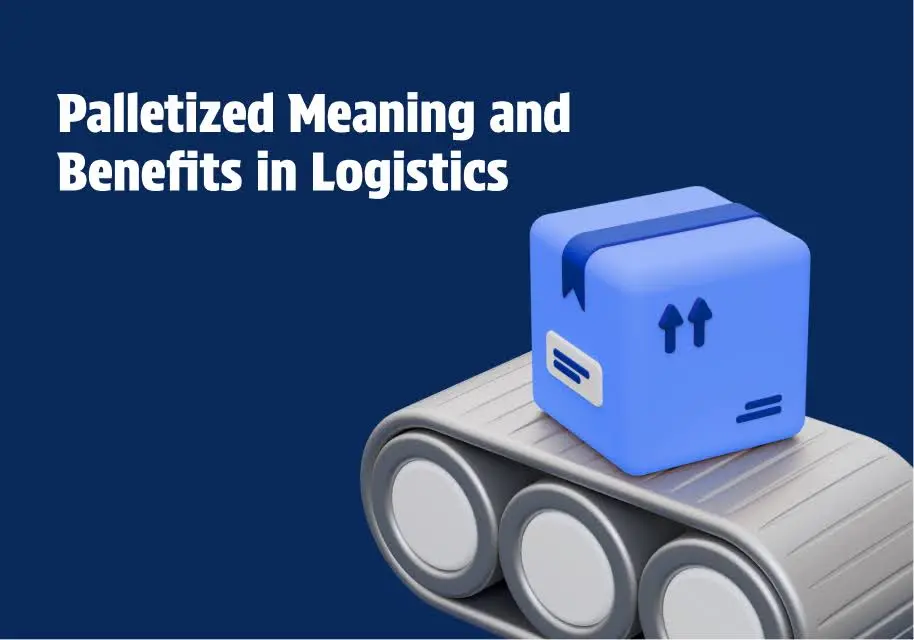Conveyor belts play a crucial role in keeping operations smooth across many industries. They move goods and materials quickly and efficiently from one point to another, helping businesses save time and effort. But not all conveyor belts are the same. Choosing the wrong one can slow things down and even cost you money. The right one, however, can make your whole operation run a lot smoother.
In this guide, you'll learn about the different types of conveyor belts, their technical features, and where they work best. You’ll get the details you need to make a smart choice for your business.
Roller Bed Conveyor Belts
Roller bed conveyors are built with a series of rollers sitting side-by-side, creating a smooth surface. This setup reduces friction, which is great for moving items that are heavy or need to travel a long way. The rollers help products glide along, so the motor doesn't have to work as hard. They are commonly used for handling items with a flat, firm bottom, like boxes and crates.
Applications:
- Postal Sorting Offices: They move mail and packages through the sorting process.
- Airport Baggage Handling: You've seen them moving luggage from the check-in desk to the plane.
- Assembly Lines: They provide a flat, stable surface for workers to build or inspect products.
If your business involves shipping, logistics, or a large warehouse, you likely need a roller bed system to move packaged items efficiently over long distances. This type of conveyor is essential for high-volume sorting and transport. You can check out the SOCO SYSTEM Driven Roller Conveyor for this purpose.
SOCO SYSTEM Driven Roller Conveyor
The SOCO SYSTEM Driven Roller Conveyor is a good example of this technology. It’s designed for moving boxes and packaged items horizontally. The rollers are driven by polycord belts, which makes the movement smooth and quiet.
- Tubes: Made from impact-proof plastic (Ø 48 mm).
- Axles: Made from aluminum (Ø 8 mm), which is strong yet light.
- Load Capacity: Each roller can hold up to 10 kg, with a total load of 75 kg per meter.
- Frames: Built from electro-galvanized steel for a lasting structure.
Flat Belt Conveyors
Flat belt conveyors use a single, continuous flat belt that is moved by powered pulleys. This design is highly adaptable and easy to maintain, especially when it comes to cleaning. The main technical benefit of a flat belt is its even surface, which can be made from various materials like rubber or PVC.
This allows it to transport a variety of items, including those that are small, soft, or have irregular shapes, without damaging them. These systems are commonly used for general-purpose transportation where a steady, controlled movement is required.
Applications:
- Industrial Environments: Great for general-purpose transportation of goods.
- Wash-Down Areas: Ideal for food processing and pharmaceutical manufacturing where frequent cleaning is essential.
- Slow Assembly Lines: Suited for manual tasks where items need to move at a controlled, consistent pace.
If you run a business in food processing, pharmaceuticals, or light manufacturing, where products need to be handled gently or the environment needs to be washed down frequently, a flat belt conveyor is a smart choice.
Modular Belt Conveyors
Modular belt conveyors are made of interlocking hard plastic pieces. If a piece breaks, you can just replace that one part instead of the whole belt, which saves time and money. This design also makes them able to handle sharp materials without tearing. Because the sections can move independently, these conveyors can be built to turn corners, which is a big help when you need to save floor space.
The plastic modules are also non-absorbent and easy to clean, making them a top choice for sensitive applications.
Applications:
- Food Transport: The hygienic design is great for moving food products.
- Metal Detection: The plastic doesn't interfere with metal detectors, so they are used for product inspection.
- Complex Layouts: Can be arranged to move items around corners, making the most of available space.
For food, beverage, or metalworking businesses that need to move products through turns or handle items that are sharp or sticky, a modular belt conveyor is a perfect fit. The SOCO SYSTEM Belt Conveyor with Plate Bedding is a product you could consider for these tasks.
SOCO SYSTEM Belt Conveyor with Plate Bedding
The SOCO SYSTEM belt conveyor with plate bedding is a versatile and modular solution. It is designed for horizontal transport, especially for lighter items over shorter distances.
- Bedding: The plate bedding provides a flat, continuous surface.
- Width: Available in widths from 200 mm to 600 mm to fit different product sizes.
- Length: Can be customized in lengths from 0.5 m to 10 m, which allows for flexible planning.
- Drive Unit: Powered by a 0.12 kW or 0.37 kW motor, with an option to connect a frequency control system for adjustable speed.
Cleated Belt Conveyors
Cleated belt conveyors are made specifically for moving things up a slope. They have vertical cleats, or barriers, attached to the belt. These cleats act like small walls to keep products from sliding back down the incline. The size and shape of the cleats can be changed depending on the job, from moving small, packaged goods to transporting large amounts of loose materials.

Applications:
- Elevator Belts: They move materials from one floor to another.
- Food Processing: Used to lift ingredients, like vegetables or frozen items, to processing machines.
- Material Handling: They can move bulk materials such as grain, sand, or recycled products.
If your business needs to move materials between different floors or levels, such as in a grain processing plant or a recycling facility, a cleated belt conveyor is an essential tool. It's built for steep inclines where a regular belt would fail.
Curved Belt Conveyors
Curved belt conveyors are designed to move products around corners. This is a big help for businesses that need to save floor space or have a winding production line. These conveyors make sure products can change direction smoothly without needing a separate transfer point, keeping everything flowing without interruption.
Applications:
- Baggage Handling Systems: They move luggage around tight corners in airports.
- Logistics and Distribution: They direct packages to different sorting lines.
- Assembly Lines: They create compact workstations where a straight path isn't possible.
If you have a compact facility or an assembly line with tight turns, a curved conveyor can greatly improve your workflow. It allows you to create a continuous, space-saving path. A product like the SOCO SYSTEM Curves with Conical Rollers would be ideal for this kind of setup.
SOCO SYSTEM Curves with Conical Rollers
For situations where you need to move items around a corner smoothly, the SOCO SYSTEM Curves with Conical Rollers are an effective solution. They are driven conveyors built to handle large and heavy items easily.
- Tubes: Made of impact-proof plastic.
- Axles: Axle diameter is 10 mm.
- Frames: Constructed from electro-galvanized steel.
- Axle Pitch: The axle pitch is 6°.
- Width: Available in 300, 400, 500, and 600 mm widths.
- Speed: Gear options include 20:1 for 10 m/min or 10:1 for 20 m/min. A frequency control system can be connected to the 3-phase motor.
- Drive: The drive uses polycord belts.
Incline/Decline Belt Conveyors
Incline/decline conveyors are made to transport items between different heights. Their belts have a high-grip surface to prevent products from slipping. A central drive gives them the power to move products up or down a slope. These systems are essential for moving products from one floor to another or for feeding items into a gravity-fed system.
Applications:
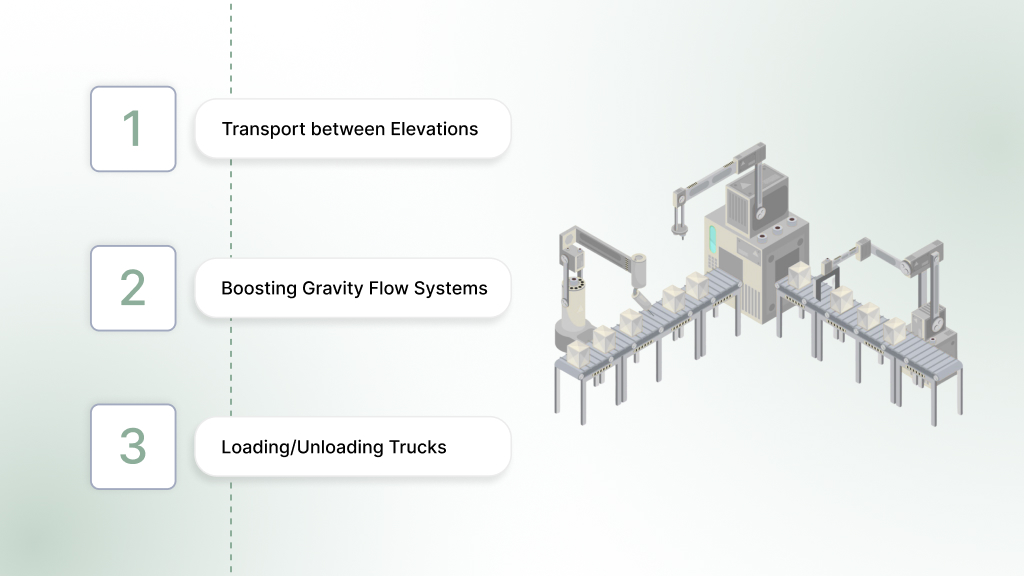
- Transport between Elevations: They move products between floors in a multi-story facility.
- Boosting Gravity Flow Systems: They give products the initial push needed to start them on a gravity-fed system.
- Loading/Unloading Trucks: A mobile incline conveyor can make loading and unloading much faster and safer.
For any business that needs to move products up or down to different elevations, such as in a warehouse, manufacturing plant, or shipping dock, incline/decline conveyors are a necessity.
Sanitary and Wash-Down Conveyors
Sanitary and wash-down conveyors are built for places where cleanliness is the highest priority, like food and medicine production. They are designed to withstand frequent, intense cleaning with water and chemicals. They often have flat wire belts or special plastic belts that let water drain easily, which helps stop bacteria from growing. These conveyors are built with stainless steel to prevent rust and are key for maintaining strict hygiene standards.
Applications:
- Food and Pharmaceutical Manufacturing: They transport products that require high hygiene standards.
- Meat and Poultry Processing: They handle raw products in a clean, sanitized environment.
- High-Temperature Baking/Cooling: They move items through ovens or cooling tunnels.
If you are running a food processing, pharmaceutical, or chemical plant, a sanitary conveyor is a requirement. This type of conveyor ensures you meet all health and safety regulations.
Conclusion
The world of conveyor belts offers a lot of different options, and each one has a specific purpose. From the low-friction design of roller bed conveyors to the hygienic features of sanitary and wash-down systems, knowing the details of each type is crucial for making your business run better.
Choosing the right conveyor is a big decision that can save you time, increase efficiency, and improve your bottom line. John Maye Company provides these conveyor solutions. The company's focus is on offering the right tools for the job, with a wide range of options to fit the unique needs of various industries.
Frequently Asked Questions
1. How do I choose the right conveyor belt for my business?
Start by considering your product. What are its size, weight, and how fragile is it? Then, look at your workspace. Does the product need to move up, down, or around corners? Finally, think about your environment. Is it wet, dry, or dusty? The answers to these questions will help narrow down your choices and find the best solution.
2. What are the main causes of conveyor belt problems?
Common problems include the belt slipping, moving out of alignment (mistracking), and rollers getting stuck. These issues often happen because of improper tension, dirt buildup, or carrying a load that's too heavy for the conveyor.
3. How often should I perform maintenance on my conveyor system?
Regular maintenance is key to preventing unexpected shutdowns. It's a good idea to do daily visual checks for dirt and alignment. For a more detailed schedule, like cleaning, lubricating, and replacing parts, you should follow the manufacturer's guidelines for your specific conveyor model.
4. Are there different types of belt materials?
Yes, conveyor belts can be made from many different materials. PVC belts are common for general use, while polyurethane (PU) is often used in the food industry because it’s food-safe. Steel belts are for high-temperature environments, and plastic modular belts are used when sanitation and flexibility are important.
5. How do I know if my conveyor belt has the right tension?
A belt with the correct tension won't slip under a load but also won't put too much stress on the motor and bearings. The best way to set tension is to follow the manufacturer's instructions. A belt that's too loose will slip, while a belt that's too tight can cause parts to wear out faster and may even break.
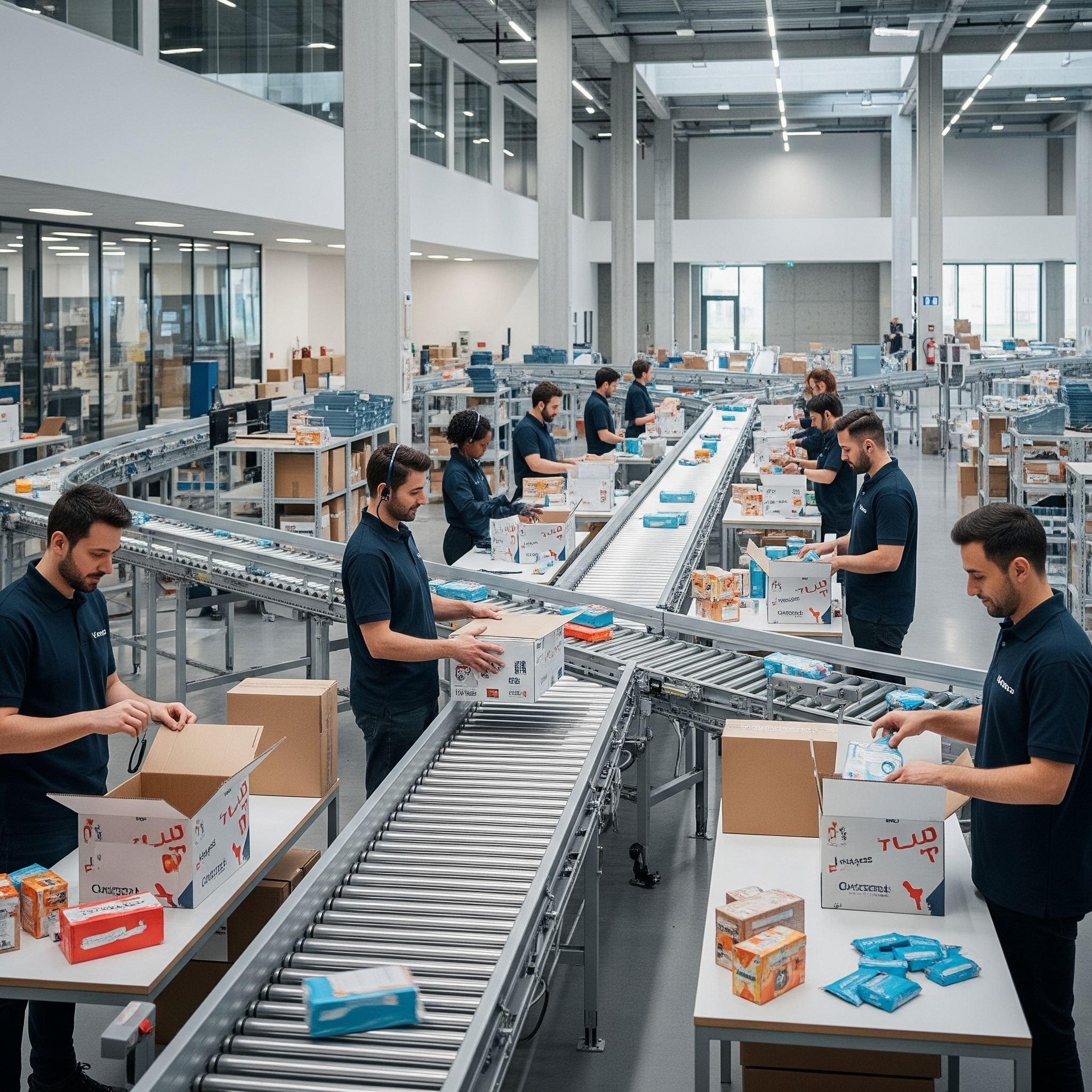
Blogs
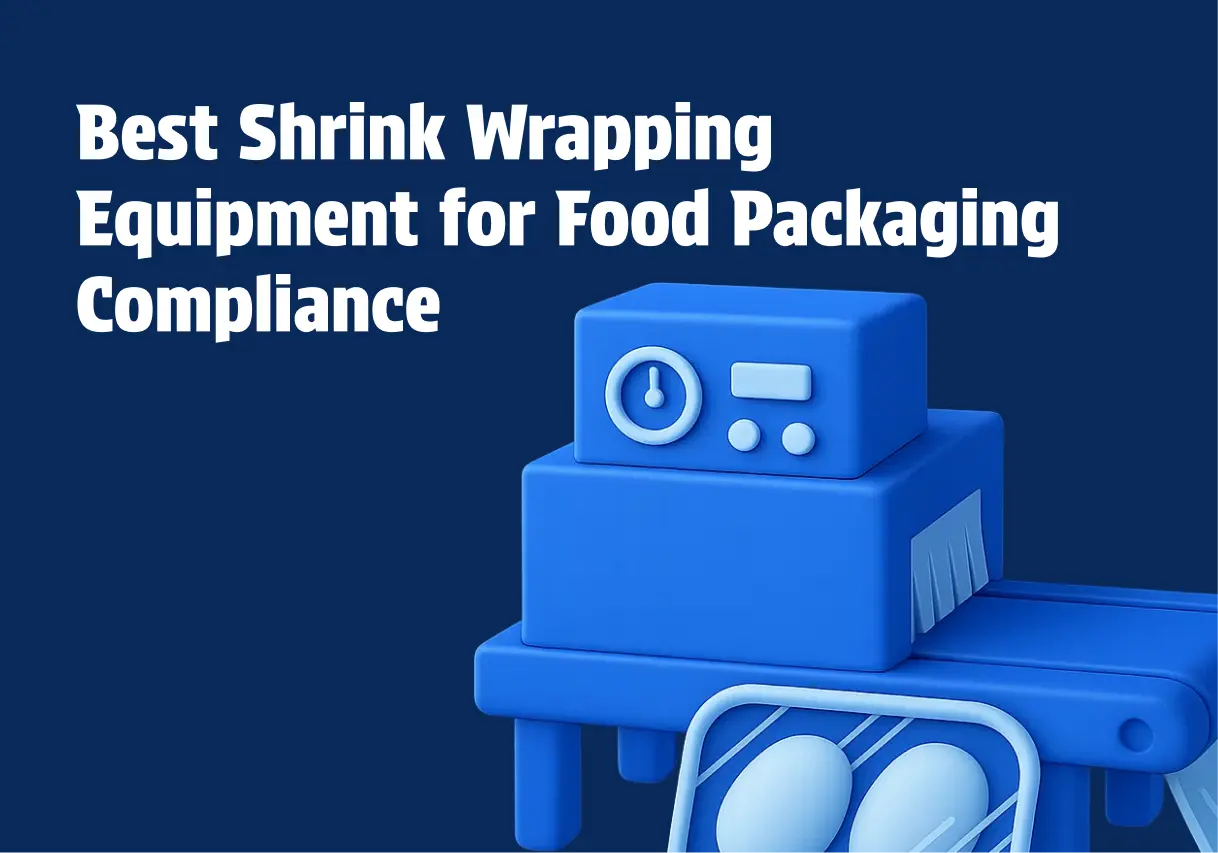
Best Shrink Wrap Machines for Your Business
Discover the best shrink wrapping equipment for food packaging compliance. Conflex offers high automation. Increase efficiency now!

Top Banding Machines for Packaging Solutions
Find top banding machines for small to mid-size packaging lines! Discover flexible automation options and sustainability features. Optimize efficiency today!
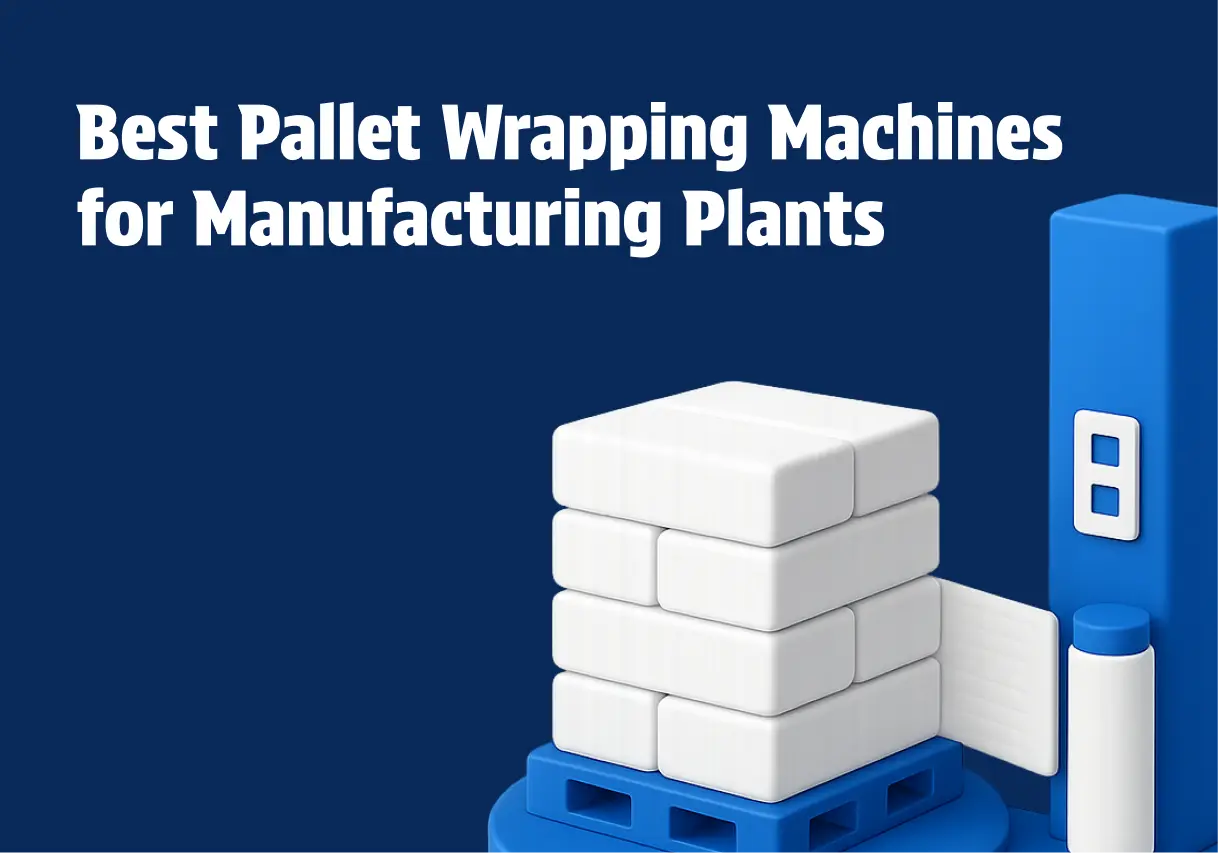
Best Pallet Wrapping Machines for Manufacturing Plants 2025
Explore the best pallet wrapping machines for manufacturing plants in 2025. Learn how to choose, compare key models, and reduce wrapping costs.
